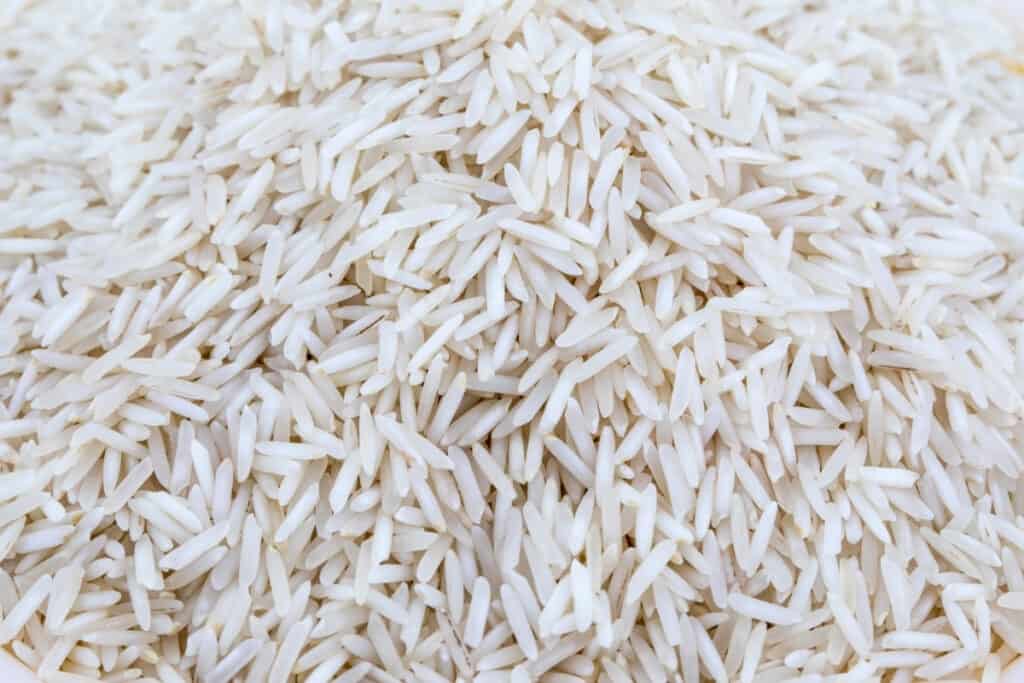If you’re looking to buy a new bean bag, or top up your existing one, then this is the article for you. We will provide all the information you need to know about different types of fillers and how they compare. Some people are unaware that there are many different types of beans and other fillers available on the market today.
Picking out new bean bag fillers might seem like an easy task but there’s actually quite a lot of science behind it too! It ultimately depends on personal preference as well as budget, because lets be honest- not everyone wants to spend their hard-earned money on something that doesn’t perform its job properly or isn’t worth the price tag.
With this in mind, we’ve given some pointers about where exactly you should start when looking at buying new beans for your favorite chair.
If you’re not sure where to start when it comes to filling your new beanbag then don’t worry because we have covered every possible scenario in our Ultimate Guide!
Table of Contents
What are bean bag fillers, and why do I need them?
Bean bag fillers are the material that fills up the bag and creates cushioning and comfort.
It’s important to have the right type of bean bag filler because it’ll affect your comfort levels as well as how long you can use them before they need replacing!
The fillers are used to make the bean bag soft and comfortable. Fillers come in a variety of shapes, sizes, and densities, so it’s important you pick one that suits your needs best!
You’ve probably seen the bean bag filler as the little white beads that come with most bean bags.
The fillers are designed to make the bean bag softer and more comfortable, but they do wear out over time! You can either replace your entire filler or add a top-up amount of new material to keep it fresh for longer.
Bean bags only need about 80% filling capacity as this will maintain its shape better than any other percentage. That means when choosing what type of filling to use, you have two options – stay with what’s already there (unless it’s old!) or change completely by moving on from one type to another.

Types of fillers available on the market today
There are a few types of fillers you can choose from when it comes to filling your bean bag. Let’s talk about each one of them.
– Expanded polystyrene (EPS)- hard-celled plastic balls very similar to Styrofoam.
They are those little white balls you have probably seen used as cushioning material for packaging and shipping. Expanded polystyrene (EPS) beads are the most common filler used in bean bag chairs because they are both cost-effective and lightweight.
EPS beads measure 3 to 5 mm in diameter and consist of 98 percent air which makes them easy to ship. They can withstand heat and won’t get moldy even when wet.
-Expanded polypropylene (EPP) – another thermoplastic polymer that is typically used to fill bean bags, although is more popular in Asia than in the U.S or Europe so they might be more difficult to find.
EPP beads are often preferred to EPS beads and other fillers. EPS foam is extremely durable but resilient. The beads are able to be crushed or deformed and return to their original shape just as quickly. This allows the beads to maintain airy, cushioning qualities even when being compressed.
They do not lose volume as quickly as EPS beads do. And they do not have as strong of an odor. The primary drawback of EPP beads is that they are prone to fire and burning. The volume also degrades when the filler comes in contact with oxygen.
-Microbeads – Microbeads are a great option if you want something that is cheaper and more sustainable. The primary drawback of microbeads is the limited size range. Because of its tiny size, you’ll need a lot of it to fill an entire bean bag.
-Compressed foam – also known as memory foam. Compressed foam is another filler that can offer reliable performance in bean bags at a good price point. A compressed piece of memory foam can be squished to about one-quarter its original size during shipping.
For bean bags, these materials are typically found inexpensively in the form of offcuts. However, because memory foam is irregularly shaped and doesn’t have a smooth texture when used under thin covers, some individuals do not like how they feel when placed inside a bean bag.
Natural and organic fillers
Let’s talk about the fillers that are all-natural and organic.
Rice is the most common filler in bean bags these days because it’s long-lasting, lightweight, and inexpensive to ship.
Beanbag beans are a great environmentally-friendly alternative for those who want something more than rice or corn kernels as their filling agent inside of their bag. It has a similar weight and feels too standard beans but they’re larger in size so you can use less without sacrificing comfort.
Packing peanuts have become popular among many people who would rather not add any type of chemical into an otherwise “all-natural” environment with this ultra-soft option. The downside? They often don’t last very long before small holes start developing on them from the pressure exerted by the bean bag, resulting in a less soft experience.

How to choose the suitable filler for your bean bag chair
Choosing the right filler for your desired bean bag chair can be difficult. There are many types of fillers in the market and they vary with their size, shape, texture, weight, or performance level among other features.
You’ll need to pick one based on your needs – do you want a lighter material or something more durable? Is it for a child or an adult? Are you looking for something that is more environmentally friendly?
It’s important to keep in mind that different fillers come with their own benefits and drawbacks.
Polystyrene beads are lightweight and don’t lose shape over time from sitting tightly packed together in your furniture while providing excellent support and cushioning.
Compressed foam provides excellent cushioning and support in bean bags. The downside is that they can be quite heavy.
Microbeads are a good option for children’s bean bags as they are lightweight for kids to move around and provide great cushioning to play or relax. It is not ideal if you need something long-lasting, as they are less durable.
Microbeads have a very small life span of around two years before it begins to break down into tiny pieces which could cause an allergenic reaction in some people.
Rice, beans, and packing peanuts are great natural fillers that provide excellent support but can tend to shift over time as they don’t expand like foam does so might not work well especially next to hard surfaces such as wood floors.
It is important to consider the size of your bean bag in relation to what kind of filler you are looking for. If you have a large or extra-large furniture piece, then it’s best to go with another type of filling as microbeads can be too small and rice, beans, and packing peanuts may not provide enough support.
Recycled vs. Virgin Beads: What’s the Difference?
When you are looking to buy filler for your bean bag, you’ll often come across virgin and recycled beads. But what is the difference between them?
Virgin beads are those that have never been used before and have only ever been shipped to you for your order, while recycled beads come from old bean bags or other furniture items such as pillows. Recycled beads can be more cost-effective but they don’t have a long life span like virgin beads.
With virgin beads, you’ll find that they have a much more uniform size and are firmer. They will be able to support your weight and giving it a better quality feel under the hand.
Recycled beads come from particles grounded into chunks and as a result of the process they go through, these beads have an irregular shape and a shorter lifespan compared to their virgin counterparts. They are a more eco-friendly purchase and a cheaper one at that, but they do sacrifice durability and maybe a little bit of comfort because they are not as good at holding form.
Virgin beads will last for a long time, so if you’re looking to buy filler for your bean bag and want it to have the highest longevity possible then virgin is the best option to go with. If you looking for a cheaper option then the recycled beads will do the job just as well.
Conclusion
With so many options available on the market today, it can be difficult for people to choose what will work best in their bean bag. The type of filler you choose for your bean bag chair can have a significant impact on comfort, durability, and longevity.
The choice between recycled and virgin beads depends on what you are looking for in a filler. If cost-effectiveness or environmental friendliness is important to you, then recycled bead bean bag chair filler may be more suitable than virgin beads. But if weight distribution matters most, then original beans might be better suited to give that fluffy feel we all love about bean bag chairs!
The information in this article should help you choose which filler will work best for your needs, whether it’s filling up an existing beanbag or buying one from scratch. We hope that this guide has been helpful and informative!
Let us know if we can help answer any questions about choosing the right filler material for your specific needs!
Recent Posts
What could be better than a nice, comfortable place for your dog to lay and relax? A bean bag! These are not just for kids anymore. They are perfect for pets of all shapes and sizes - from small dogs...
The Fatboy rocking chair has been around for a few years now. The design is sleek, the material is soft, and it's just about perfect for sitting in with your feet up while reading a book or watching...

